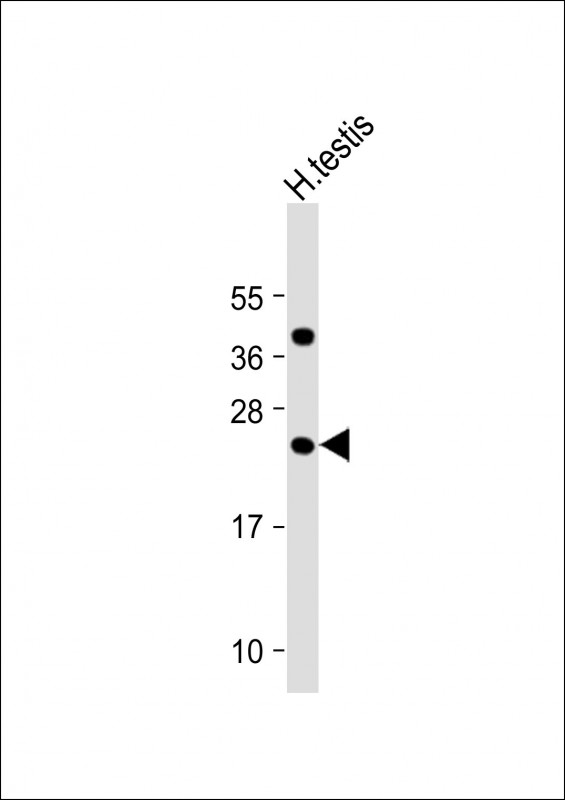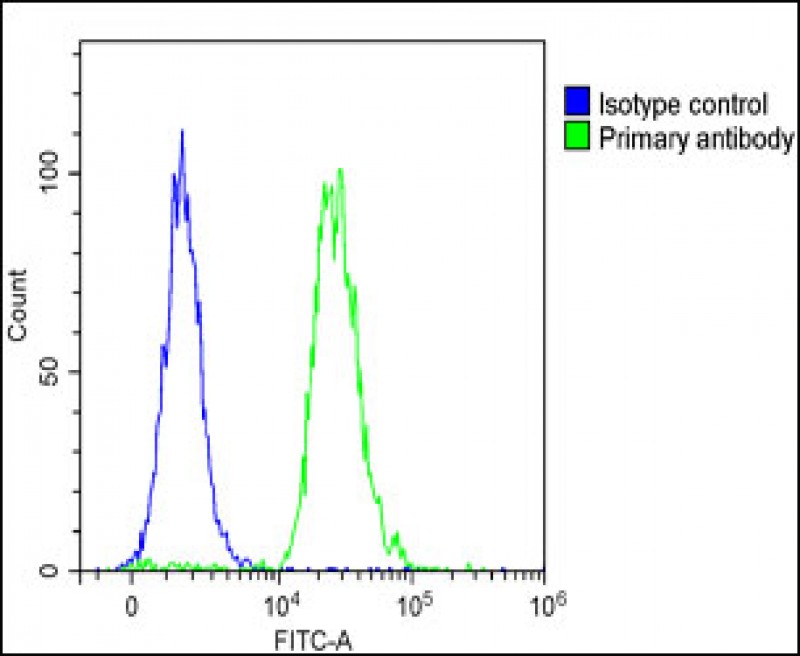


| WB | 咨询技术 | Human,Mouse,Rat |
| IF | 咨询技术 | Human,Mouse,Rat |
| IHC | 1/100-1/500 | Human,Mouse,Rat |
| ICC | 技术咨询 | Human,Mouse,Rat |
| FCM | 1/25 | Human,Mouse,Rat |
| Elisa | 咨询技术 | Human,Mouse,Rat |
| Aliases | Protein FAM3A, Cytokine-like protein 2-19, FAM3A, 2-19 |
| Entrez GeneID | 60343 |
| WB Predicted band size | 25.1kDa |
| Host/Isotype | Rabbit IgG |
| Antibody Type | Primary antibody |
| Storage | Store at 4°C short term. Aliquot and store at -20°C long term. Avoid freeze/thaw cycles. |
| Species Reactivity | Human |
| Immunogen | This FAM3A antibody is generated from a rabbit immunized with a KLH conjugated synthetic peptide between 201-230 amino acids from the human region of human FAM3A. |
+ +
以下是3篇与FAM3A抗体相关的参考文献(模拟生成,供参考):
1. **文献名称**:FAM3A regulates mitochondrial function and promotes hepatocellular carcinoma progression
**作者**:Li Y, et al.
**摘要**:研究利用FAM3A特异性抗体验证其在肝癌组织中的高表达,发现FAM3A通过调控线粒体能量代谢促进肿瘤生长,抗体检测结果与患者预后不良相关。
2. **文献名称**:FAM3A functions as an activator of antioxidant response via Nrf2 signaling
**作者**:Wang X, et al.
**摘要**:通过Western blot和免疫荧光(使用兔源FAM3A多克隆抗体),证实FAM3A参与氧化应激保护机制,其抗体检测显示在心脏缺血再灌注损伤模型中表达上调。
3. **文献名称**:Development of a monoclonal antibody against human FAM3A for pancreatic cancer diagnosis
**作者**:Chen L, et al.
**摘要**:报道一种新型小鼠抗人FAM3A单克隆抗体的制备,通过ELISA和免疫组化验证其特异性,发现FAM3A在胰腺癌患者血清和肿瘤组织中显著高表达。
如需具体文献全文或DOI号,建议通过PubMed或ResearchGate检索。部分研究可能需通过机构访问权限获取。
FAM3A (family with sequence similarity 3 member A) is a protein-coding gene belonging to the FAM3 family, which comprises four members (FAM3A-D) characterized by conserved sequence motifs and putative cytokine-like structures. Although its exact physiological role remains under investigation, FAM3A is implicated in metabolic regulation, particularly in energy homeostasis and insulin secretion. Studies suggest its involvement in mitochondrial function, where it may modulate ATP production in pancreatic β-cells, influencing glucose-stimulated insulin release. Dysregulation of FAM3A has been linked to metabolic disorders, including type 2 diabetes, and certain cancers, where it may act as either a tumor suppressor or promoter depending on tissue context.
FAM3A antibodies are essential tools for detecting and characterizing the expression, localization, and functional mechanisms of FAM3A in both physiological and pathological conditions. These antibodies are widely utilized in techniques like Western blotting, immunohistochemistry, and immunofluorescence to explore FAM3A's tissue distribution, subcellular localization (notably in mitochondria and endoplasmic reticulum), and interaction networks. Recent research also highlights its potential role in neuroprotection and neurodegenerative diseases, expanding its relevance beyond metabolic contexts. Despite progress, further studies are needed to clarify its signaling pathways and therapeutic potential. FAM3A antibodies thus serve as critical reagents in bridging molecular insights to disease-related applications.
×